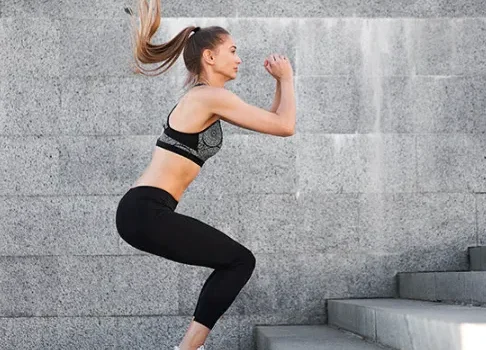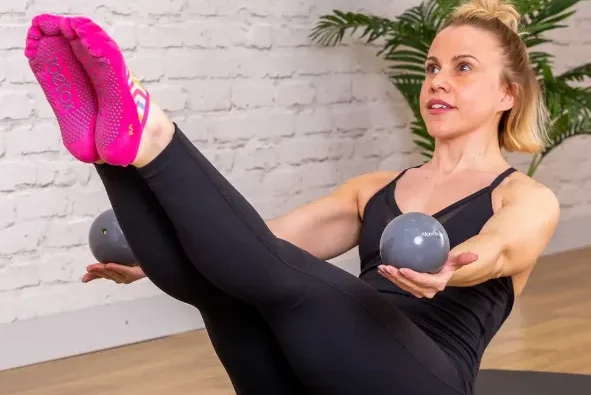
If you’re juggling a demanding job, family commitments, and the desire to stay fit, you’re not alone. Finding time to exercise can be a challenge, especially as you get older. However, High-Intensity Interval Training (HIIT) could be the solution you’re looking for. Whether you’re in your 30s, 40s, or beyond, this time-efficient workout can help you achieve incredible fitness results without requiring hours at the gym. Let’s explore why HIIT is perfect for your busy life, how to safely get started, and some beginner-friendly workouts to get you moving.
What is HIIT and Why is it Ideal for Professionals?
HIIT is a workout method that alternates between intense exercise bursts and short periods of rest or lower-intensity activity. For example, sprinting for 30 seconds followed by walking for a minute. The beauty of HIIT is that it maximizes your workout in minimal time, making it perfect for those with busy schedules.
As we age, metabolism slows down, muscle mass decreases, and stress can take a toll on our bodies. This is where HIIT shines. It offers several benefits for those past their 20s:
- Effective Fat Burning: HIIT burns fat more efficiently than steady-state cardio. Thanks to the “afterburn effect” (Excess Post-Exercise Oxygen Consumption or EPOC), your body continues to burn calories even after you finish your workout.
- Boosted Heart Health: This form of exercise helps improve cardiovascular fitness, which is crucial for preventing heart disease as we age.
- Muscle Preservation: The high-intensity movements in HIIT encourage muscle growth, which helps offset age-related muscle loss.
- Quick and Convenient: A 20-minute HIIT session can deliver results similar to a full hour of jogging. This makes it easy to fit into a packed day.
Whether you’re just starting to exercise or are at a moderate fitness level, HIIT can be tailored to your needs, making it a versatile option for everyone.
Why Busy Professionals Should Choose HIIT
Here’s why you, as a busy professional, should consider incorporating HIIT into your routine:
- Time-Efficient: Sessions can last as little as 15-20 minutes, fitting easily into even the busiest schedules.
- Increased Metabolism: HIIT revs up your metabolism, helping you burn calories even after your workout.
- No Equipment Necessary: Many HIIT exercises use just your body weight, so you can do them at home, in the park, or while traveling.
- Improved Mental Health: The release of endorphins from HIIT can reduce stress and anxiety, common issues for those balancing work and family.
- Scalable for All Fitness Levels: Whether you’re a beginner or more experienced, HIIT can be adjusted to suit your current fitness level.
How to Safely Begin Your HIIT Journey
If you’re new to exercise, or it’s been a while since your last workout, it’s important to ease into HIIT to avoid injury. Here’s how to start safely:
- Check with Your Doctor: If you have any health concerns, like high blood pressure or joint issues, it’s best to consult your healthcare provider before starting intense physical activity.
- Start Slow: Begin with 1-2 sessions a week and gradually increase frequency as your body adapts.
- Warm-Up and Cool-Down: Never skip this step! Spend 5 minutes warming up with light movement, like marching in place, and cool down with stretches to prevent strains.
- Listen to Your Body: If you experience dizziness or extreme fatigue, reduce the intensity or extend rest periods.
- Focus on Proper Form: Good technique is essential for preventing injuries. If you’re unsure, consider watching instructional videos or working with a trainer.
Beginner-Friendly HIIT Workouts
Here are two beginner-friendly HIIT routines that you can do without any equipment. Aim to start with one or two sessions per week and gradually increase the intensity as your fitness improves.
Workout 1: Low-Impact Bodyweight HIIT (15 Minutes)
- Warm-Up (5 minutes): March in place, swing your arms, and do side-to-side steps to prepare your body.
- Circuit (8 minutes): Perform each of these four exercises for 30 seconds, followed by 30 seconds of rest. Repeat twice:
- Modified Jumping Jacks: Step one foot out to the side while raising your arms overhead, then switch sides.
- Bodyweight Squats: Lower your body into a squat, keeping knees behind your toes.
- Push-Ups on Knees: Perform push-ups with your knees on the ground to reduce strain.
- Slow Mountain Climbers: In a plank position, slowly bring one knee toward your chest and then switch legs.
- Cool-Down (2 minutes): Stretch your quads, hamstrings, and shoulders.
Workout 2: Cardio-Strength HIIT (20 Minutes)
- Warm-Up (5 minutes): Light jogging or dynamic stretches, like arm circles and leg swings.
- Circuit (12 minutes): Perform each exercise for 40 seconds, followed by 20 seconds of rest. Repeat three times:
- High Knees (Low-Impact): March while lifting your knees to hip height.
- Chair Step-Ups: Step up onto a sturdy chair or bench, alternating legs.
- Wall Push-Ups: Perform push-ups against a wall at an angle.
- Side Lunges: Step to the side and bend one knee, keeping the other leg straight.
- Plank Hold: Hold a forearm plank, keeping your core engaged.
- Cool-Down (3 minutes): Stretch your calves, chest, and lower back.
How to Stay Motivated with HIIT
Staying consistent with a fitness routine can be difficult, especially when you’re balancing work and other responsibilities. Here are some tips to help you stay motivated:
- Schedule Your Workouts: Treat them like appointments. Block out time in your day for a quick HIIT session.
- Get a Workout Partner: Find a friend or family member to work out with, or join an online fitness community for support.
- Track Your Progress: Use a fitness app or journal to log your workouts and celebrate small victories.
- Change Things Up: Swap exercises to keep your routine fresh and fun.
- Reward Yourself: Set milestones (e.g., 10 workouts) and treat yourself to something special like new workout gear.
Common HIIT Mistakes to Avoid
To get the most out of your HIIT sessions, avoid these common mistakes:
- Overtraining: Don’t overdo it. Stick to 2-3 sessions per week to prevent burnout and injury.
- Skipping Warm-Ups: Never skip your warm-up; jumping straight into intense activity can increase the risk of injury.
- Neglecting Nutrition: A balanced diet is essential to support recovery and keep your energy up.
- Ignoring Pain: Mild discomfort is normal, but sharp pain means something is wrong—stop and reassess.
How to Progress with HIIT
As your fitness improves, you can gradually increase the challenge:
- Shorten Rest Periods: Cut rest time down to 15 seconds for more intensity.
- Add Weights: Use light dumbbells for added resistance during squats or lunges.
- Increase Intensity: Perform exercises faster or add jump variations, like jump squats.
- Extend Duration: Work up to longer sessions, such as 25-30 minutes.
Check in with your body every few weeks to ensure you’re progressing safely.
Why HIIT is a Sustainable Fitness Solution
HIIT isn’t just a quick fix—it’s a long-term fitness strategy that fits into even the busiest schedules. Its efficiency, flexibility, and ability to scale to your fitness level make it an ideal choice for anyone looking to stay in shape. By committing to just 1-3 sessions per week, you’ll see improvements in your energy, mood, and overall health.
Final Thoughts: Start Your HIIT Journey Today
High-Intensity Interval Training is the perfect solution for busy men and women looking to improve their fitness without sacrificing time. With quick, beginner-friendly workouts and no equipment required, HIIT is accessible, effective, and sustainable. Start with the workouts provided, stay consistent, and watch your fitness transform.












